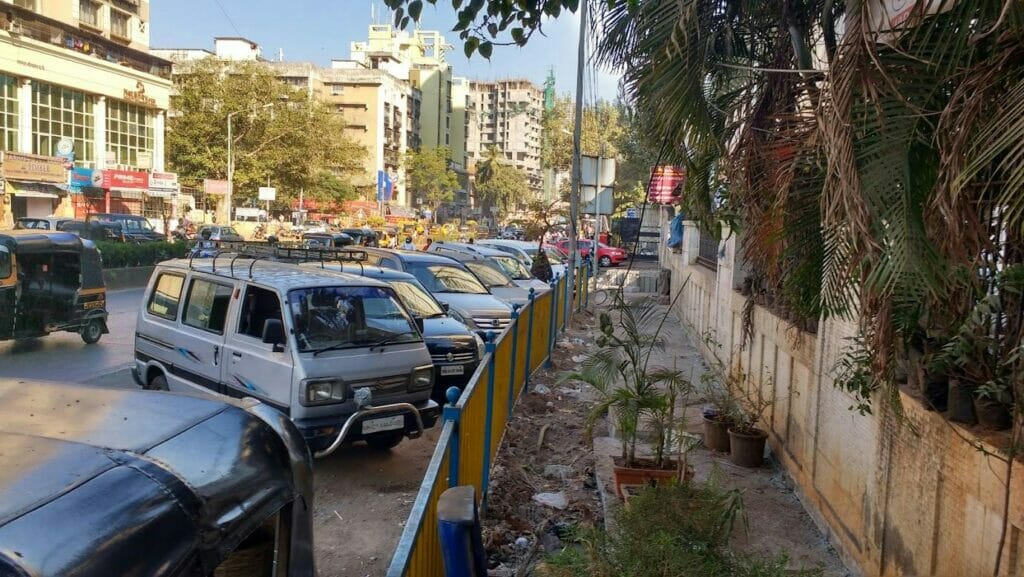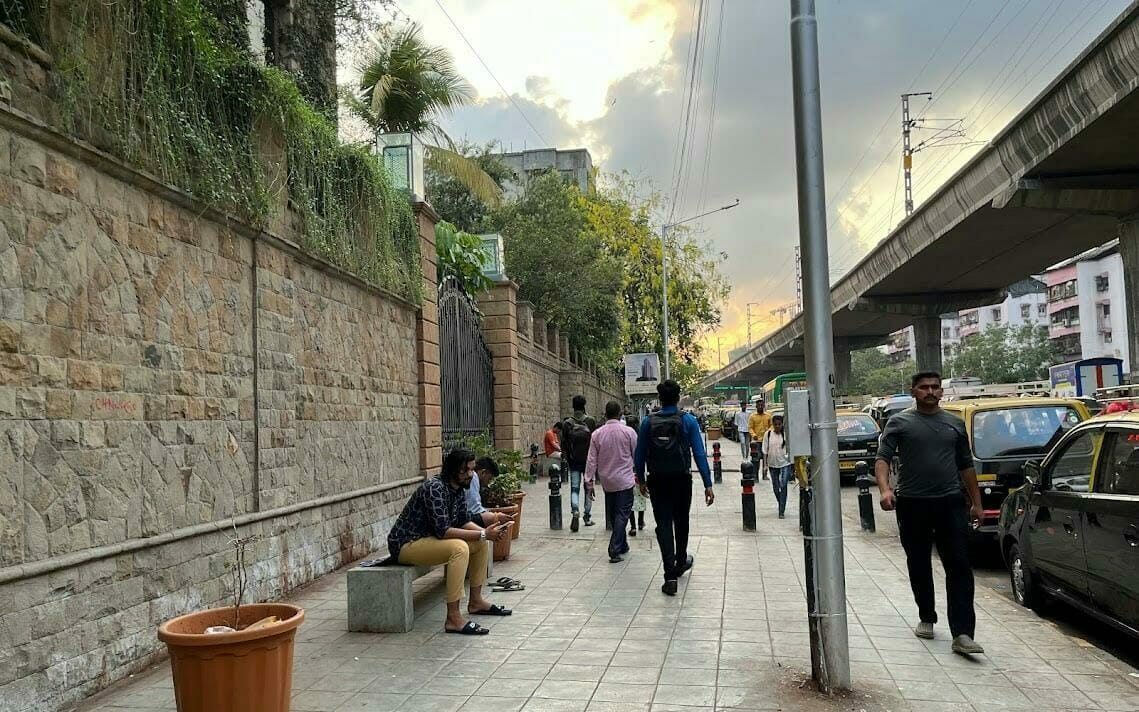Over the past two decades there has been much political posturing about turning various Indian cities into a ‘Singapore or Shanghai’. While we may have mimicked the glass and steel façade buildings, airports and some freeways, why is it that we have not been able to mimic the public realm and walkability aspects of these and other cities? Is it the municipal bodies and politicians who are responsible for the sorry state of pedestrian infrastructure and the public realm? Or do we, as a society, hold pedestrians in disdain?
Providing a great walking experience is one of the easiest (and cost effective) ways in which Indian cities can give their residents an experience of living in a world class city. While a per capita income equal to London, Singapore or New York is still a distant dream, our citizens can get the London-like walking experience across the entire city in just one five year plan within the budget limitations of a developing country like ours.
It is also unfortunately one of the aspects which most eludes Indian cities. We need an urgent plan to ensure that we guarantee residents of all Indian cities, a world class walking experience in a very short time frame.
A great opportunity lies ahead of us, because at just 35.87% of the population classified as urban in 2022, India is still early in the process of urbanisation and can incorporate good features, when streets are more malleable. The troublesome part is once you have neglected street design, you are locked into the same for a long period. Change then cannot be made easily.
The simplest to understand but most critical of the aspects of street design is footpath width.
Why are south Mumbai’s roads better than most suburban roads?
When you walk in south Mumbai, you are struck by the width provided for footpaths on some arterial roads. These roads were made around the time of independence or earlier. The city’s population was a fraction of today , and consequently with less density. And yet, it was understood that if you have to accommodate two way traffic on a footpath at peak time without constriction, you need at least two to three metres of footpath width. And so we have most of the roads in Dadar, Parel, Fort and Colaba with wide footpaths.
Contrast that with some of the newer layouts in suburban or north Mumbai. Even a metre’s width of footpath is a relief. Look at the case of Linking Road between Bandra and Santacruz or Lokhandwala Complex in Andheri west, one of the more popular neighbourhoods to have developed in the past four decades. Why did the developers of these layouts and complexes not provide at least as much if not more footpath width? These are also fashionable high streets. Why is it that the Indian consumer does not show the same level of discernment for the public realm as they do for the lifestyle elements of global cities?
A few decades later, island city roads are still able to absorb the load from a drastically higher population and do not need widening. But the widths in the relatively newer suburban Mumbai are already inadequate.
The involved social, financial & political costs dictate that these inadequate footpaths practically cannot be widened now. Pedestrian load has increased multifold and there is a complete collapse leading to pedestrians spilling on the roads with motorised traffic.
Read More: Footpaths in Mumbai: walking may be injurious to your health
Walkability cells within municipality bodies
In the past few years, across the nine municipal corporations that make up the Mumbai Metropolitan Region (MMR) there has been a systematic onslaught on the needs of pedestrians. The widths of footpaths only keep shrinking & worsening, instead of adhering to newer and better standards.
We urgently need well staffed Non Motorised Transport (NMT) Cells in each local body, which works dedicatedly only to look into what pedestrians and cyclists require.
New York City created the position of a Chief Public Realms Officer just recently. Similar steps have been underway across some of the most liveable cities around the world.

We at ‘Walking Project’ aim to collaborate with local bodies in the MMR to implement targeted pedestrian improvement programs that deliver tangible results. To enhance our efforts, we harness the power of modern open-source technologies to collect street views of footpaths.
Using this data, we update actionable tags on a custom map, which is shared directly with the Urban Local Bodies (ULBs) for prompt action. Once the necessary steps are taken, we promptly update the tags. This systematic approach will enable the gradual improvement of walking corridors in the city, one street at a time.
We acknowledge that this project won’t yield immediate change, primarily due to the complexity of the problem and the involvement of numerous stakeholders. However, we aim to be the catalyst for change. Our hope is that years from now, we will reap the rewards of our dedicated efforts and witness a Mumbai that is as enjoyable to walk and explore as some of the cities we have long aspired to emulate.
Struggles and pleasant surprises
Some of us formed Walking Project in 2012 with an aim to give Mumbai the best possible walking experience; and then probably support other Indian cities to build their own walking projects as well. It has been more than ten years, and we are left with a deepening of the neglect. The pressures on walking environments in the city have only grown.
If we are to make any difference, then a critical mass of citizens will necessarily have to provide a clear mandate and support advocacy organisations.
With ‘Walking Project’, our mission is to tackle this significant challenge head-on. We aim to awaken citizens from their seemingly hypnotic apathy toward walkability in Mumbai. We achieve this through a multifaceted approach that includes informative pedestrian-focused videos, engaging social media content, and weekly citizen activities.
Our ultimate goal is to empower the average Mumbaikar to once again dream of a walkable Mumbai and shed the ignorance or “chalta hai” attitude towards our footpaths. We have several sub projects already underway to tilt the needle and shape the Mumbaikars mindset in the form of Community Walks, Community Talks, Know your footpath.
Our struggle for better walking spaces in the public realm have been going on over the past decade. During the same period the experience in the private realm keeps exceeding standards every year.
Carving off a section of the earth & putting in sensory overload in a temperature controlled environment has proven an instant hit. Billions of rupees have been made available for this. We call these places shopping malls. Yet we as a society haven’t been able to replicate this in our democratically accessible public realm.
But there are pleasant surprises as well. Even as we complete the article, we have had the occasion to walk on a section of the Andheri Kurla Road after a long time and have been pleasantly surprised to see some delightful changes to an otherwise godforsaken road.
Similarly the already wide and adequate footpaths in Dadar east near Ruia college also have gotten better with sloped edges & a smoother surface quality, while the presence of new tactile pavements have added to the safety of the visually impaired. These are some of the good experiences that need replication throughout the city.

What does a good walking environment entail?
A good walking environment is not just about walking, it is your gateway to numerous other developmental goals. Want citizens to experience better physical, emotional and mental health and well being? Focus on great footpaths. Immediately, it becomes a tool in the city’s health arsenal. The benefits of walking on health are proven, and yet it continues to be seen solely as a mobility issue. Want more people to leave cars behind and adopt public transport? Change the shabby walking conditions around public transport nodes. Want to boost business? Make footpaths in retail spaces as walkable as Copenhagen’s Strøget.
Walking is as fundamental a need as it gets. If you are breathing, then walking is likely the next most important activity you do. But just like breathing, it seems to be taken for granted.
(You can follow The Walking Project at @walkingproject on X (Twitter) or mail them at info@walkingproject.org. To participate and understand various activities follow this page – https://www.walkingproject.org)